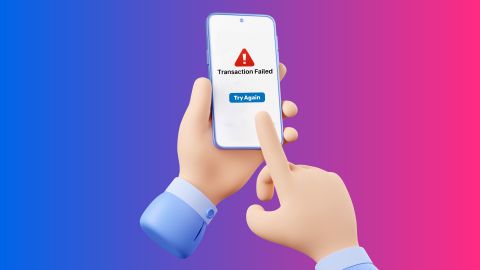Atomic energy utilises the rise and fall of ocean tides to produce electricity. This renewable energy source is reliable and environmentally friendly, aiding in carbon reduction efforts.
What is atomic energy?
-
-
Atomic energy is derived from the fundamental forces that bind the components of an atom. The two primary methods of releasing this energy are fission and fusion.
How atomic energy generates electricity
Atomic energy generates electricity through controlled nuclear fission in reactors. Here is how it works:- Fuel preparation: Uranium or plutonium fuel rods are placed in a reactor.
- Nuclear reaction: Neutrons collide with the nuclei of the fuel atoms, causing them to split (fission).
- Heat generation: The heat produced converts water into steam.
- Turbine activation: The steam spins turbines connected to generators.
- Electricity production: As the turbines spin, they generate electricity which is sent to the power grid.
- Cooling system: After passing through the turbines, the steam is cooled back into water and reused in the system.
Electricity plays a vital role, from lighting our homes to powering essential devices, making it indispensable in modern living. With electricity being so central, managing bill payments has become a key part of household routines. Fortunately, platforms like Bajaj Pay make paying electricity bills seamless and hassle-free. Bajaj Pay offers a simple, efficient way to stay on top of payments, helping users easily manage their electricity expenses and support a sustainable future with renewable energy.Know about non-renewable energy
Non-renewable energy comes from sources that cannot be replenished quickly, such as fossil fuels and nuclear energy. These sources are finite and can lead to environmental issues. Here are key points about non-renewable energy:- Fossil fuels: Includes coal, oil, and natural gas.
- Environmental impact: Contributes to pollution and climate change.
- Limited supply: Once depleted, these resources take millions of years to form.
- Nuclear energy: While efficient, it produces radioactive waste.
Types of atomic energy sources
Atomic energy primarily comes from two processes: fission and fusion. Here is a breakdown of these sources:- Nuclear fission: The splitting of an atom's nucleus into smaller parts releases a significant amount of energy. This process is commonly used in nuclear power plants.
- Nuclear fusion: This involves combining two light atomic nuclei to form a heavier nucleus, releasing energy in the process. Fusion powers the sun but is not yet commercially viable for electricity generation.
Benefits of atomic energy solutions
Atomic energy offers several advantages:- Low greenhouse gas emissions: Produces minimal emissions compared to fossil fuels.
- High energy density: A small amount of nuclear fuel can produce large amounts of energy.
- Reliable power supply: Provides consistent base-load power that supports grid stability.
- Long-term resource availability: With advancements in technology, nuclear fuel can be recycled or bred from other materials.
- Economic growth: Nuclear power plants create jobs and stimulate local economies.
Uses of atomic energy
Atomic energy has various applications beyond electricity generation:- Medical applications: Used in cancer treatment through radiation therapy.
- Industrial uses: Powers processes in manufacturing and material testing.
- Research purposes: Essential in scientific research for studying atomic structures.
- Space exploration: Fuels spacecraft and satellites with long-lasting power sources.
Importance of electricity payment online
Paying your electricity bill online offers several benefits:- Convenience: Pay anytime from anywhere without visiting physical locations.
- Time-saving: Reduces waiting times associated with traditional payment methods.
- Secure transactions: Online platforms provide secure payment gateways ensuring customer data protection.
- Immediate confirmation: Users receive instant confirmation of payment, reducing billing disputes.
Conclusion
Atomic energy is a powerful resource that plays a vital role in our modern world. Understanding its sources, benefits, and applications help us appreciate its significance in generating electricity sustainably. Utilising platforms like Bajaj Pay for bill payments further enhances our experience as consumers.State-wise electricity bill payment
-
Recharge and Pay Bills
Mobile Prepaid
Mobile Postpaid
Broadband Bill Payment
Electricity Bill Payment
Bajaj Finserv App for All Your Financial Needs and Goals
Trusted by 50 million+ customers in India, Bajaj Finserv App is a one-stop solution for all your financial needs and goals.
You can use the Bajaj Finserv App to:
You can use the Bajaj Finserv App to:
- Apply for loans online, such as Instant Personal Loan, Home Loan, Business Loan, Gold Loan, and more.
- Explore and apply for co-branded credit cards online.
- Invest in fixed deposits and mutual funds on the app.
- Choose from multiple insurance for your health, motor and even pocket insurance, from various insurance providers.
- Pay and manage your bills and recharges using the BBPS platform. Use Bajaj Pay and Bajaj Wallet for quick and simple money transfers and transactions.
- Apply for Insta EMI Card and get a pre-approved limit on the app. Explore over 1 million products on the app that can be purchased from a partner store on Easy EMIs.
- Shop from over 100+ brand partners that offer a diverse range of products and services.
- Use specialised tools like EMI calculators, SIP Calculators
- Check your credit score, download loan statements and even get quick customer support—all on the app.
Frequently asked questions
How does atomic energy work?
Atomic energy works by harnessing the power released during nuclear reactions—specifically fission or fusion—within an atom's nucleus to generate heat and electricity efficiently.
What are the main challenges of atomic energy?
The main types of non-renewable energy include fossil fuels (coal, oil, natural gas) and nuclear energy derived from uranium or plutonium used in nuclear reactors for power generation.
What technologies are used in atomic energy?
The amount of electricity produced from atomic sources varies by reactor design; however, a single nuclear reactor can generate over 1 gigawatt (GW) of electrical power continuously for years without interruption.
What are the main sources of energy?
Energy sources are categorised based on their origin and availability. They can be derived from various natural processes, including sunlight, chemical reactions, and mechanical forces. Sources commonly include coal, oil, natural gas, wind, solar, and nuclear power. Each type serves distinct purposes, from generating electricity to powering vehicles and industries.
Why is energy efficiency important?
Energy efficiency refers to using less energy to perform the same tasks or produce the same output. It is crucial because it helps reduce costs, minimises resource depletion, and lowers environmental impacts like air pollution. Improved efficiency in homes, industries, and transportation also supports sustainable development and reduces the strain on existing energy infrastructure.
Show More
Show Less




